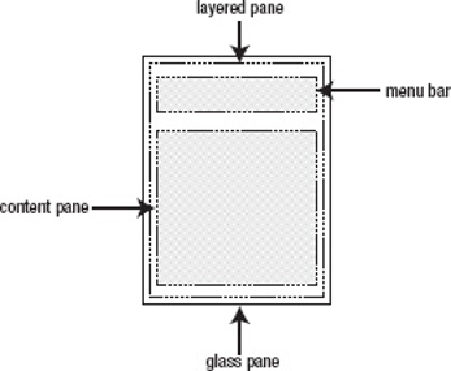Java Reference
In-Depth Information
Figure 7-11.
Using panes to architect a GUI.
Container classes that support panes store a single
JRootPane
instance. This in-
stance stores a
JLayeredPane
instance and a
Component
instance that serves as
the glass pane. The
JLayeredPane
instance stores a
javax.swing.JMenuBar
instance and a
Container
subclass instance that serves as the content pane.
The following example demonstrates how you might create a frame window with a
single button:
JFrame f = new JFrame();
JRootPane rp = f.getRootPane();
Container cp = rp.getContentPane();
cp.add(new JButton("Ok")); // Add the button to the frame's
content pane.
f.pack();
f.setVisible(true);
Container classes that support panes implement the
javax.swing.RootPaneContainer
interface, which provides convenience
methods for accessing the root pane and setting/getting the content, glass, and layered
panes.Forexample,
RootPaneContainer
's
Container getContentPane()
method behaves as if you called
getRootPane().getContentPane()
. It lets
you shorten the previous example to the following:

